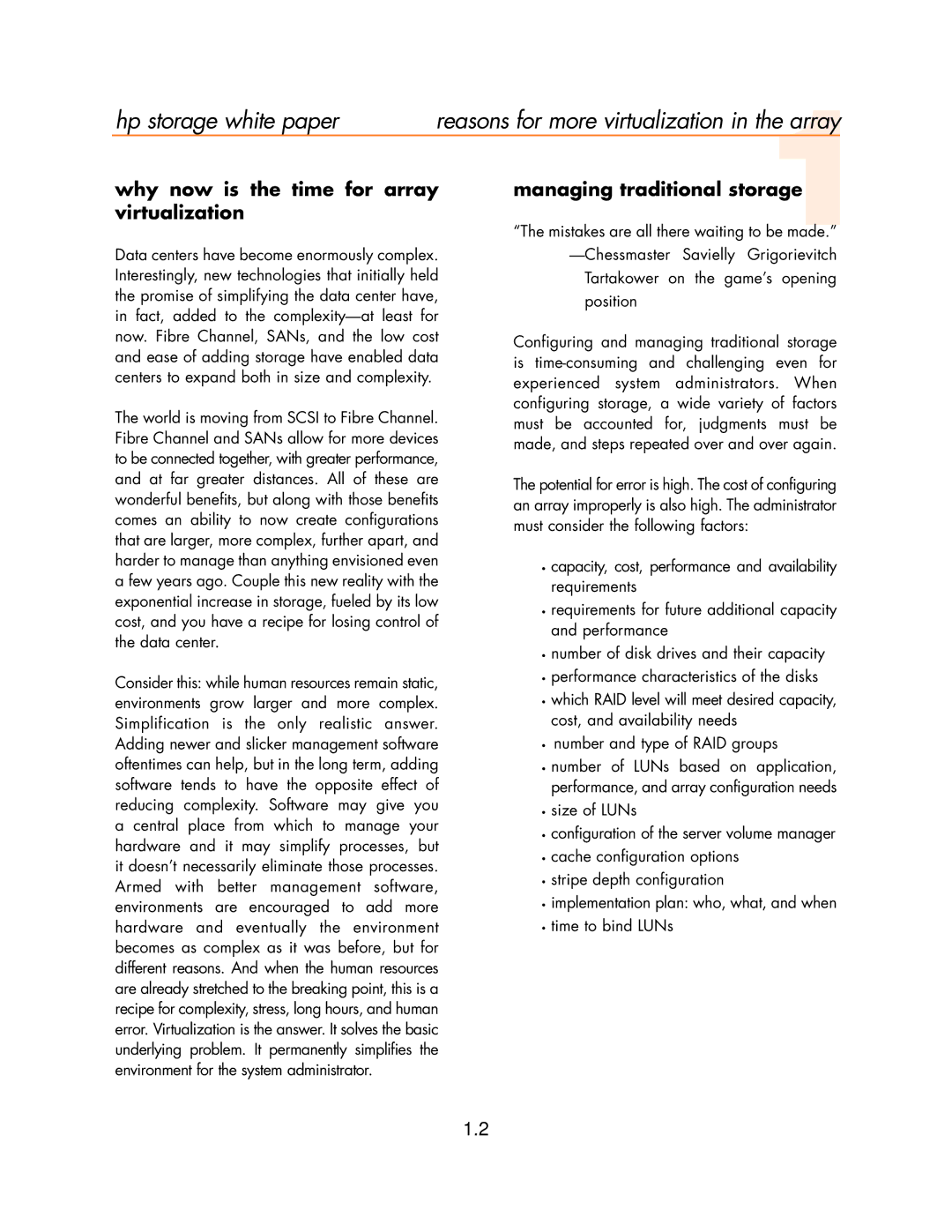hp storage white paper | reasons for more virtualization in the array | |
why now is the time for array | managing traditional storage | |
virtualization1 “The mistakes are all there waiting to be made.”
Data centers have become enormously complex. Interestingly, new technologies that initially held the promise of simplifying the data center have, in fact, added to the
The world is moving from SCSI to Fibre Channel. Fibre Channel and SANs allow for more devices to be connected together, with greater performance, and at far greater distances. All of these are wonderful benefits, but along with those benefits comes an ability to now create configurations that are larger, more complex, further apart, and harder to manage than anything envisioned even a few years ago. Couple this new reality with the exponential increase in storage, fueled by its low cost, and you have a recipe for losing control of the data center.
Consider this: while human resources remain static, environments grow larger and more complex. Simplification is the only realistic answer. Adding newer and slicker management software oftentimes can help, but in the long term, adding software tends to have the opposite effect of reducing complexity. Software may give you a central place from which to manage your hardware and it may simplify processes, but it doesn’t necessarily eliminate those processes. Armed with better management software, environments are encouraged to add more hardware and eventually the environment becomes as complex as it was before, but for different reasons. And when the human resources are already stretched to the breaking point, this is a recipe for complexity, stress, long hours, and human error. Virtualization is the answer. It solves the basic underlying problem. It permanently simplifies the environment for the system administrator.
Configuring and managing traditional storage is
The potential for error is high. The cost of configuring an array improperly is also high. The administrator must consider the following factors:
•capacity, cost, performance and availability requirements
•requirements for future additional capacity and performance
•number of disk drives and their capacity
•performance characteristics of the disks
•which RAID level will meet desired capacity, cost, and availability needs
•number and type of RAID groups
•number of LUNs based on application, performance, and array configuration needs
•size of LUNs
•configuration of the server volume manager
•cache configuration options
•stripe depth configuration
•implementation plan: who, what, and when
•time to bind LUNs
1.2
